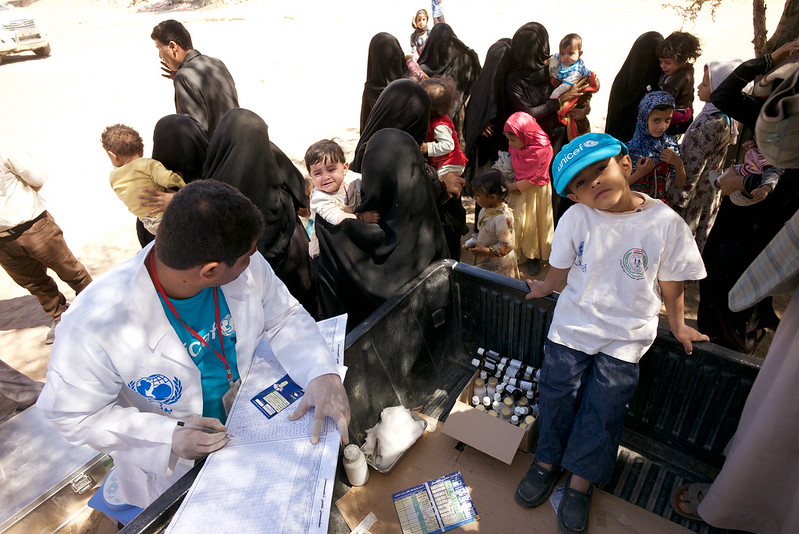 The Western Pacific Region is struggling to provide people in that Region with access to public healthcare. Rural areas in Cambodia, the Philippines and Vietnam are more adversely affected than urban areas. About two out of every five people do not have access to services such as immunization, pregnancy, childcare and disease treatment. By 2048, an expected 21 million people in the Western Pacific are expected to die each year from noncommunicable diseases.
The Western Pacific Region is struggling to provide people in that Region with access to public healthcare. Rural areas in Cambodia, the Philippines and Vietnam are more adversely affected than urban areas. About two out of every five people do not have access to services such as immunization, pregnancy, childcare and disease treatment. By 2048, an expected 21 million people in the Western Pacific are expected to die each year from noncommunicable diseases.
However, the World Health Organization (WHO) is working to bring adequate health services, human resources and financial protection to these impoverished communities. WHO is currently endorsing a publication for Universal Health Coverage (UHC). It includes a framework for action and aims to transform public systems as a whole and support people in maintaining health for life.
Public Health Care Struggles
Within many countries in the Western Pacific, some can access health care yet face high out-of-pocket expenses that cause financial hardship. This can become a catalyst for dipping below the poverty line. As much as 10% of the population’s income is used for health care purposes, which can then force choices between health care or adequate food and shelter.
In 1940, only 40% of the Region lived until age 60; this number is expected to reach 94% by 2048 after the implementation of the WHO initiative. About 90 million people within the Region do not utilize a primary drinking water facility. Furthermore, about 400 million have no access to sanitation services that safely manage human waste. Diarrhea is often then contracted and contributes to malnutrition and antimicrobial resistance, which creates an overall unhealthy population over time.
Viral hepatitis is a significant threat in the Western Pacific, claiming around 1500 lives every day in the Region. Other environmental stresses pose challenges to the health, safety and physical well-being of rural populations. The increasingly polluted air and water supplies are contributing to a rise in cancer, diabetes and heart disease.
Vulnerable Populations in the Western Pacific Region
The most vulnerable populations in the Region include those living in rural and peri-urban areas. These areas struggle with accessing and paying for health care. Additionally, there are high disease burdens, poor health outcomes and limited access to affordable and nutritious food. More than 300 million people in the Western Pacific Region cannot afford a healthy diet, contributing heavily to malnutrition.
Cambodians struggle with unsafe drinking water and a lack of sanitation facilities. The overall population health is negatively affected by poverty, lack of essential commodities and adverse social conditions. Similar to other countries, populations face high out-of-pocket payments that threaten impoverishment. In recent years in the Philippines, the top causes of death have been heart diseases, neoplasms and cerebrovascular diseases.
The country is also struggling with a lack of hospital beds and adequate medical equipment in rural areas more than in urban areas. Rural areas often contain non-licensed doctors and ill-equipped facilities, while larger cities such as Manila have better medical resources. This creates a more significant disparity between minority groups.
Similarly, the public health care system in Vietnam is underfunded, with insufficient resources allocated to health care infrastructure, equipment and staff training. This occurs in the majority public sector of the public health care system. High out-of-pocket payments account for large percentages of health expenditures in the country. This significantly burdens low-income families, resulting in delayed or inadequate care.
WHO’s Initiative
WHO understands that the right to health does not just include services. Other factors include safe, clean water, air, nutritious food, adequate housing, quality education, decent working conditions and freedom from discrimination. Therefore, its UHC initiative will contain action frameworks and health financing for social well-being and sustainable development for public health systems.
This initiative could create a strengthened public health system in Cambodia. It could reduce infant, child and mother mortality, as well as provide more adequate sanitation facilities. In the Philippines, having a collaborative public health system between the government and the public could provide a safe, effective, quality health system to those who need it, with a minimal waste of resources.
In Vietnam, removing disparities in the quality of care between urban and rural settings and public and private sectors would create a healthier population overall.
– Chloe Landry
Chloe is based in Providence, RI, USA and focuses on Global Health for The Borgen Project.
Photo: Flickr
 Amid the
Amid the 